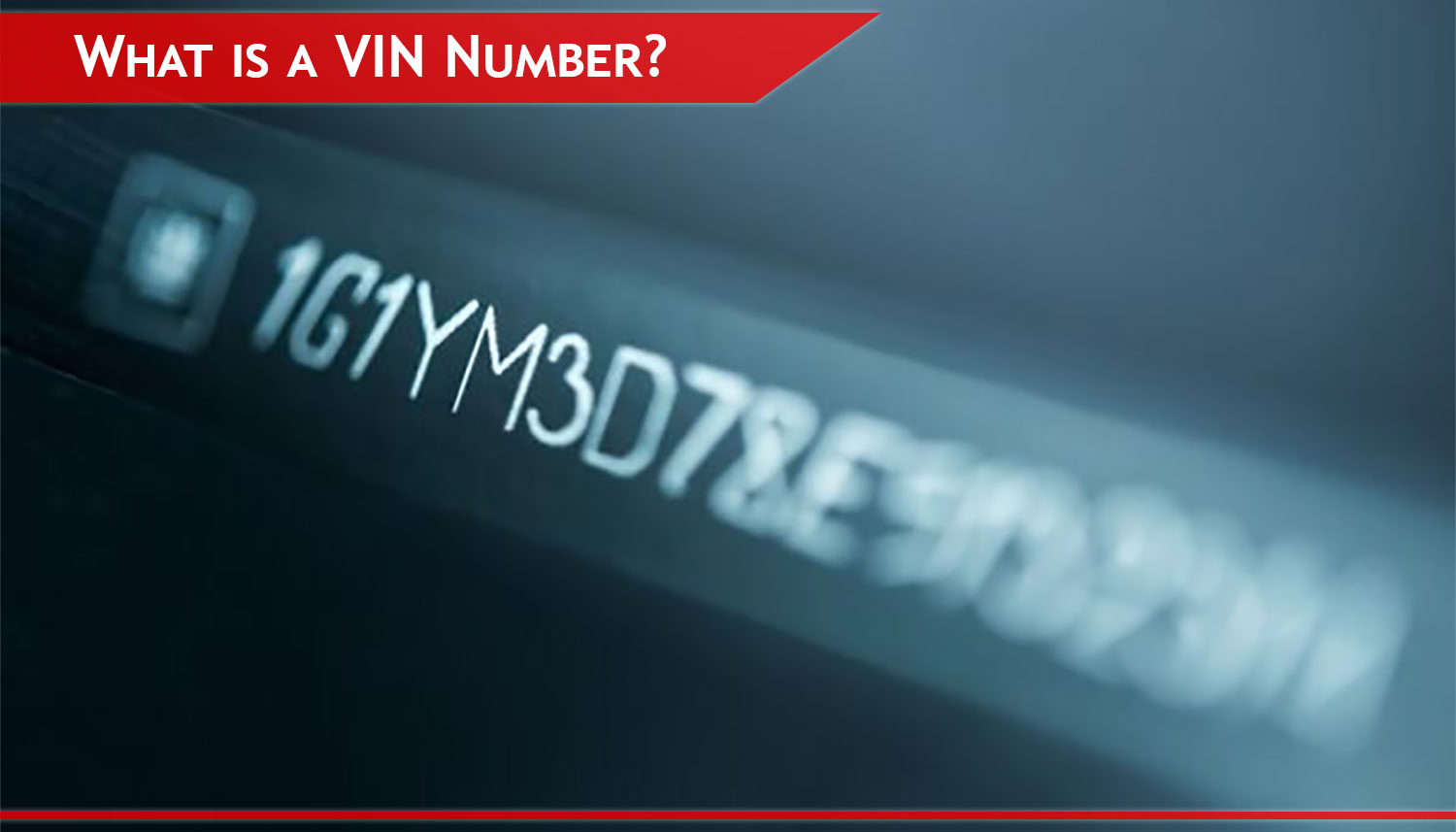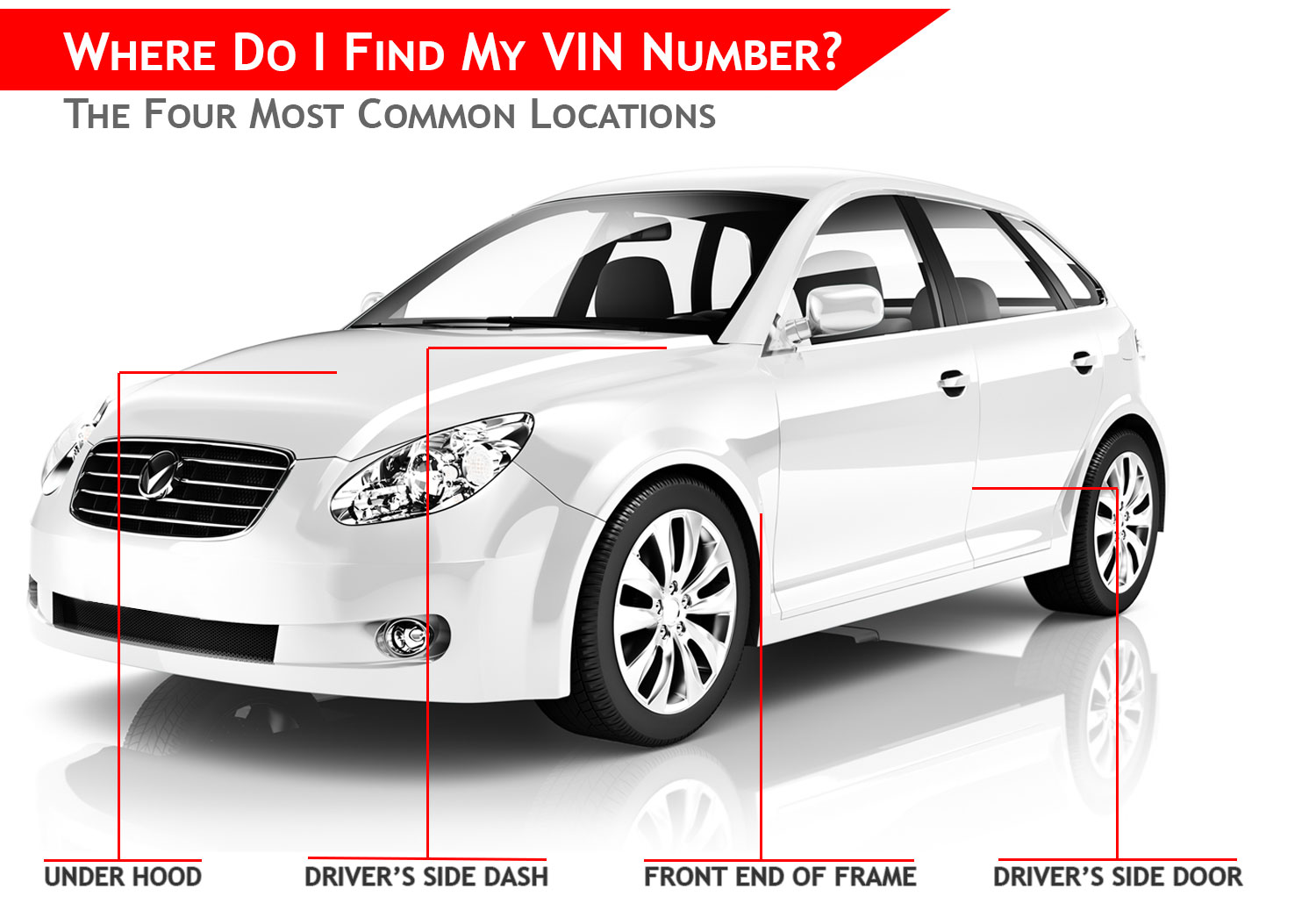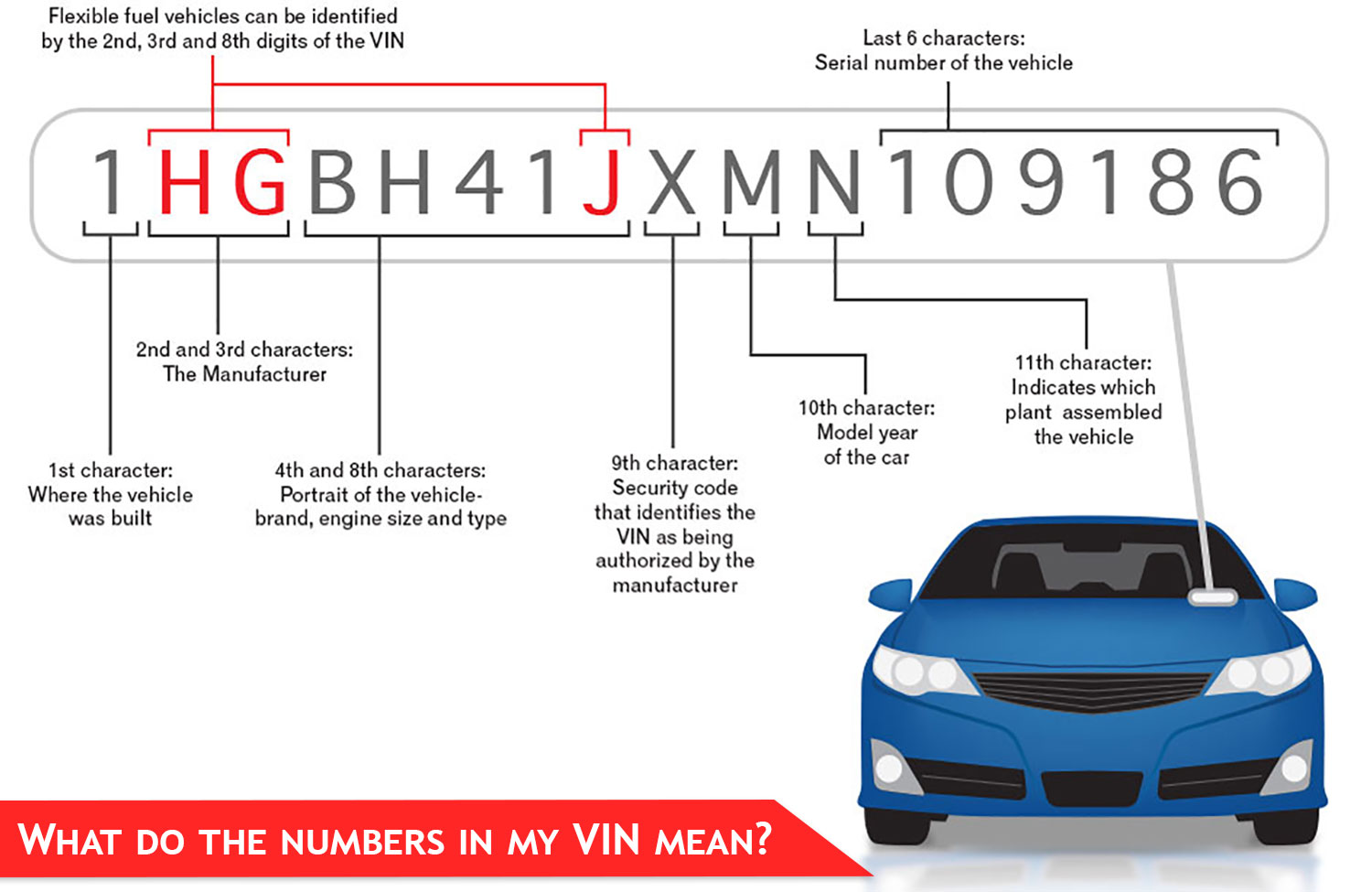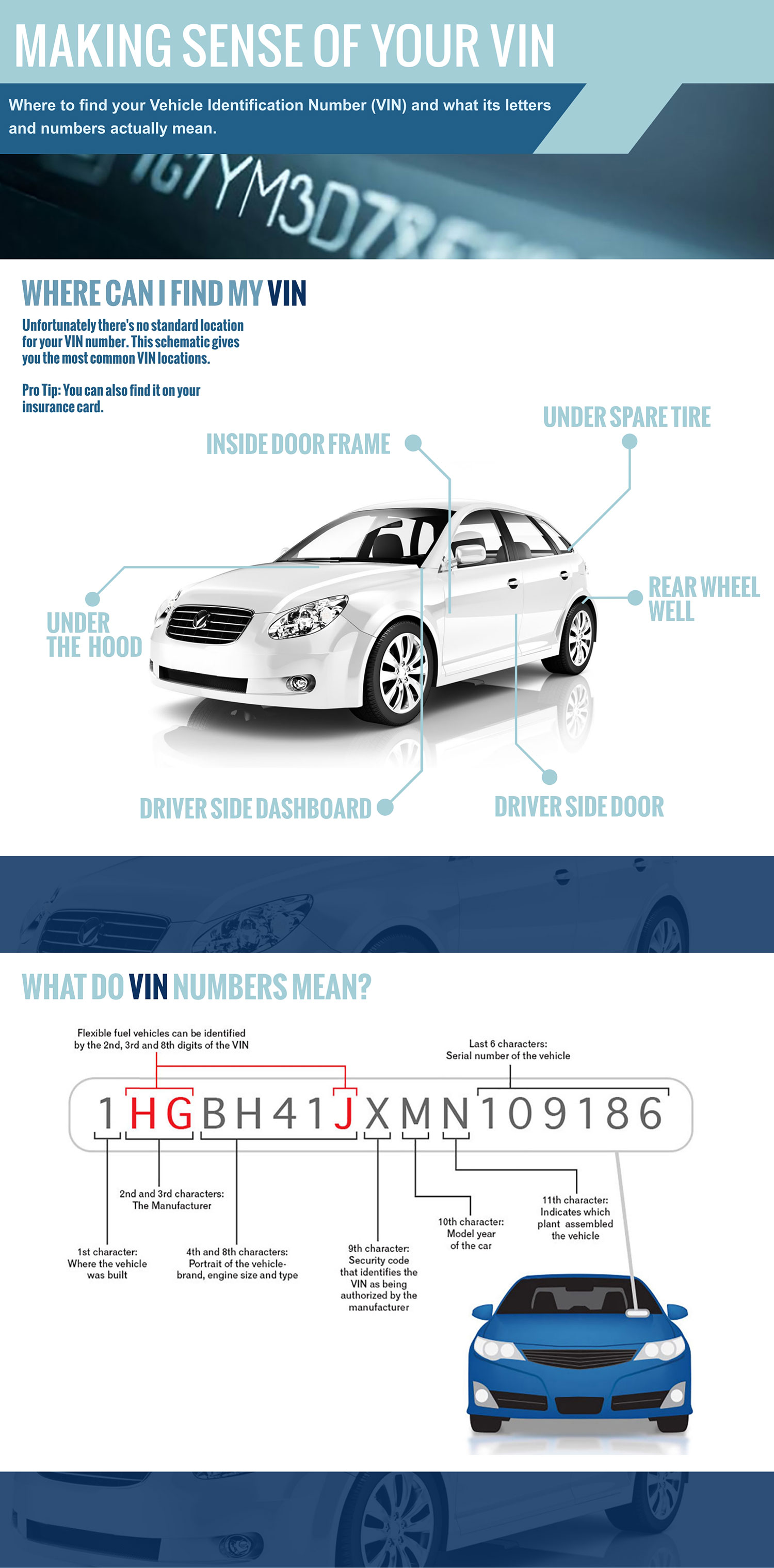
What is a VIN Number?
A VIN or, as most people say it, a VIN number is literally an acronym for
"vehicle identification number" and acts like a fingerprint for your specific
vehicle. In other words, no two vehicles in operation can have the same VIN. A
VIN is composed of 17 characters (digits and capital letters) that act as a
unique identifier for the vehicle. A VIN displays the car's unique features,
specifications and manufacturer.

Where Can I Find My VIN?
In general there are four primary locations that manufacturers place the VIN,
They are as follows:
- Under the hood (in front of the engine block in gas-powered vehicles)
- Driver's side interior dash
- Front end of frame
- Interior pillar of driver's side door
In addition to these common VIN locations, car makers have also been know to
place the VIN in the rear wheel well (directly above the tire) and under the
spare tire in the trunk.

What Do the Numbers in a VIN Mean?
Your VIN information is organized into groups and a simple search using your vehicle identification number
will tell you a lot about your ride.
The first group of three numbers and letters in a VIN make up the world manufacturer identifier (WMI).
In this group, the first digit or letter identifies the country of origin. For example, cars made in the U.S. start with 1, 4 or 5. Canada is 2, and Mexico is 3. Japan is J, South Korea is K, England is S, Germany is W, and Sweden or Finland is Y.
The second element in this group tells you about the manufacturer. In some cases, it's the letter that begins the manufacturer's name. For example, A is for Audi, B is for BMW, G is for General Motors, L is for Lincoln, and N is for Nissan.
Keep in mind that the "A" can also stand for Jaguar or Mitsubishi, and an "R" can also mean Audi.
Luckily, the next digit ties it all together.
The third digit, when combined with the first two letters or numbers, indicates the vehicle's type or manufacturing division.
If you're interest has been piqued, check out the
list of WMI codes here.
The next six digits to check (positions 4-9) are the vehicle descriptor section.
Numbers 4 through 8 describe the car with such information as the model, body type, restraint system, transmission type and engine code.
Number 9 is the check digit, which is used to detect invalid VINs. The number that appears varies and is based on a mathematical formula that the U.S. Department of Transportation developed.
The following group of eight elements (10-17) is the vehicle identifier section.
In the 10th position, you'll see a letter indicating the model year. The letters from B to Y correspond to the model years 1981 to 2000. The VIN does not use I, O, Q, U or Z. From 2001 to 2009, the numbers 1 through 9 were used in place of letters. The alphabet started over from A in 2010 and will continue until 2030.
The letter or number in position 11 indicates the manufacturing plant where the vehicle was assembled. Each automaker has its own set of plant codes.
The last six digits (positions 12 through 17) are the production sequence numbers, which each car receives on the assembly line.
Is It Safe to Share My VIN?
Yes, it is completely safe. In fact, many VINs are visible on vehicles just by walking up to the windshield and peering at a tiny plate stamped to the dashboard. It’s also possible to find out a VIN by searching the license plate number.
It's common practice to provide your VIN to insurance companies, prospective
buyers and when trying to determine fitment of automotive parts and accessories.
